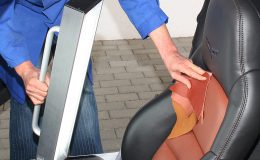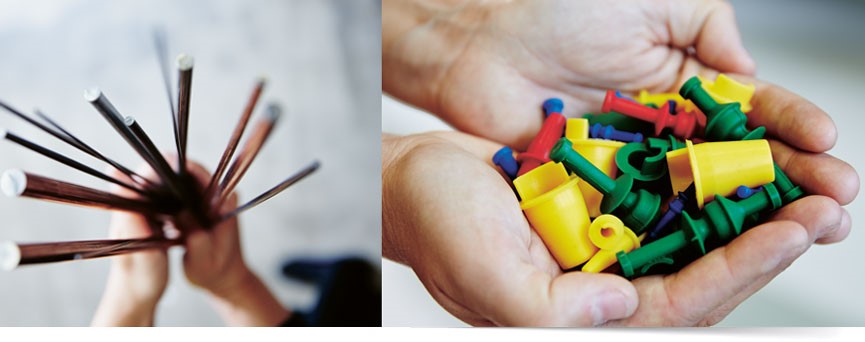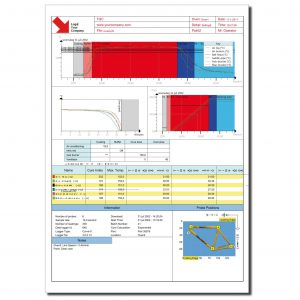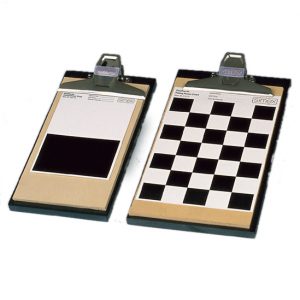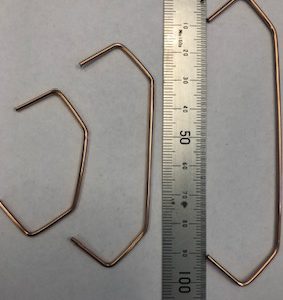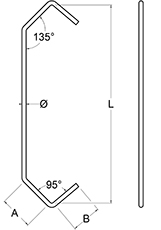Description
High Temperature Silicone Plugs
Our plugs are made from material that far superior for masking holes
RUBBER & PLASTICS
| Intermittent max temp ( °C ) |
Continuous max temp ( °C) |
Tensile strength (Mpa) | Elongation at break (%) | ||
| Silicone Rubber | 315 | 230 | 8 | 400 | |
| GE Silicone Rubber | 315 | 230 | 10 | 500 | |
| EPDM Rubber | 125* | 100 | 12 | 300 | |
| SBR Rubber | 100 | 90 | 14 | 500 | |
| Natural Rubber | 90 | 80 | 21 | 500 | |
| Thermoplastic Elastomer | 150 | 135 | 8 | 500 | |
| Polyamide | 160 | 70 | 50 | ||
| Polyamide 6.6 | 200 | 90 | 60 | ||
| Polyamide 6.6-15 % glass fibre | 240** | 120 | 100 | ||
| Polypropylene | 150 | 110 | 35 | ||
| Polyethylene, low density | 70 | 50 | 8 | ||
| Polyvinyl chloride, flexible | 150 | 100 | 50 | 20 |
| Compression set | Hardness (ShA) | Alkalies | Acids | UV | Abrasion | Tear | Density (g/cm3) | Water absorption (24 h , 20 °C) |
|||
| Silicone Rubber | 13 (% 22 h @ 175 °C) | 30-80 | D | C | A | E | E | 1,18 | 0 | ||
| GE Silicone Rubber | 25 (% 22 h @ 175 °C) | 30-80 | D | C | A | E | E | 1,18 | 0 | ||
| EPDM Rubber | 20 (% 22 h @ 125 °C) | 40-80 | D | A | B | C | D | 1,25 | 0 | ||
| SBR Rubber | 20 (% 22 h @ 70 °C) | 40-80 | D | D | D | C | D | 1,25 | <0,1 | ||
| Natural Rubber | 20 (% 22 h @ 70 °C) | 40-80 | E | D | D | A | C | 1,2 | <0,1 | ||
| Thermoplastic Elastomer | 35 (% 22 h @ 70 °C) | 50-95 | D | B | E | C | B | 0,95 | <0,1 | ||
| Polyamide | 70 (ShD) | A | D | B | 1,13 | 9 | |||||
| Polyamide 6.6 | 80 (ShD) | A | D | B | 1,13 | 8 | |||||
| Polyamide 6.6-15 % glass fibre | 90 (ShD) | A | D | B | 1,23 | 6 | |||||
| Polypropylene | 55 (ShD) | B | A | E | 0,91 | <0,1 | |||||
| Polyethylene, low density | 50 (ShD) | C | C | E | 0,92 | <0,1 | |||||
| Polyvinyl chloride, flexible | 70 (ShD) | D | D | B | 1,45 | <0,1 |
A = Excellent, B = Very good, C = Good, D = Fair, E = Poor
* In powder coating some materials can be used just once, for example EPDM which has a top temperature resistance of 125°C but
can actually standard temperatures up to approx. 200°C. EPDM plugs get harder but do not melt.
** Thermoplastics like PA actually start melting at approx. 160°C but can be stabilized in some different ways, for example with a
mixture of glass fibres.



